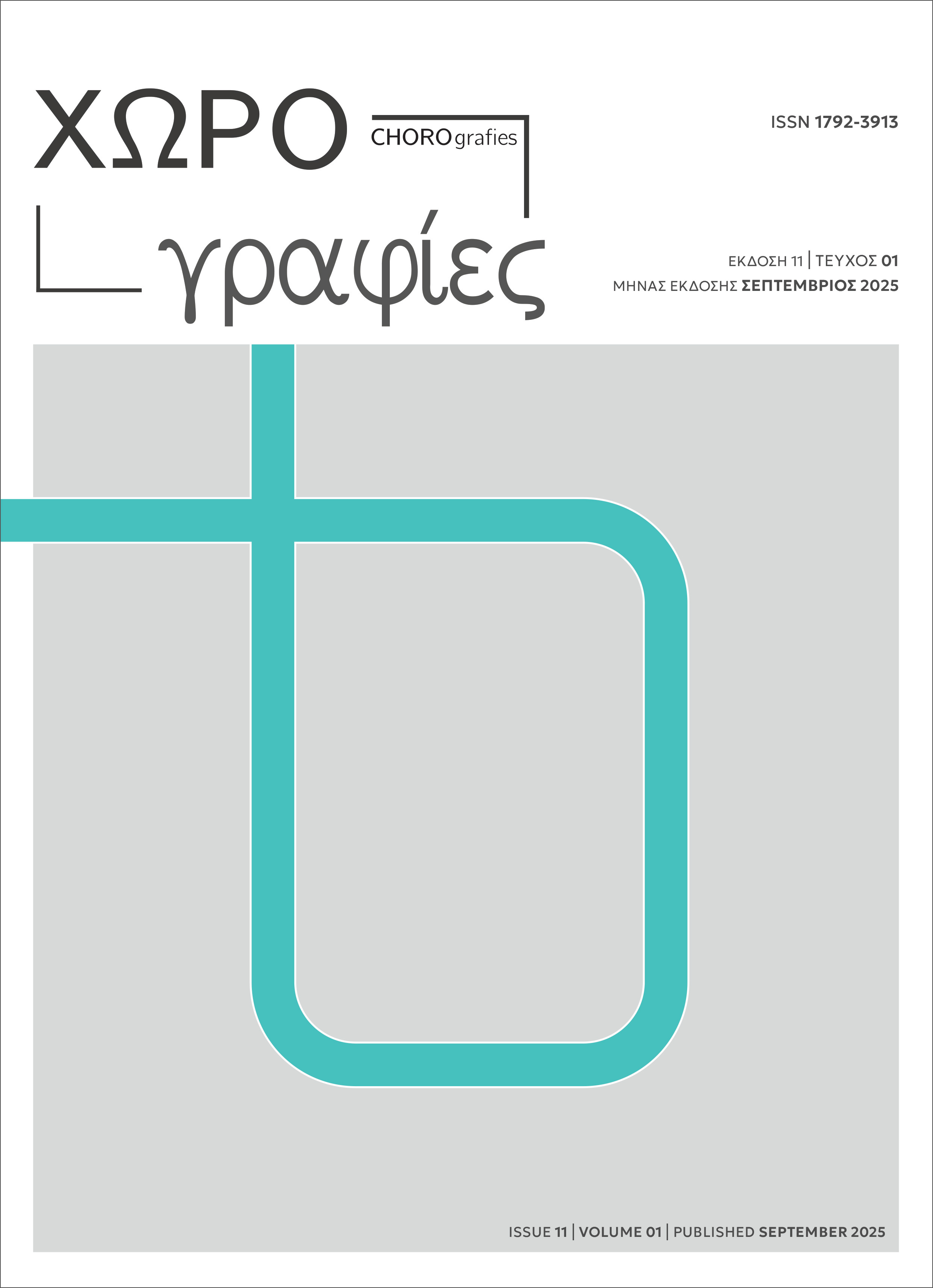Published 2025-09-22
Keywords
- border,
- informal public space,
- mapping,
- micro-narratives,
- intervention
Copyright (c) 2025 Ayşe Eda Adıgüzel, Ahmet Bender Uğurlu, Serim Aygen Kiştin İşcan

This work is licensed under a Creative Commons Attribution-NoDerivatives 4.0 International License.
How to Cite
Abstract
Border is a dynamic existence that allows semantic changes, ruptures, and connections. While discussions on publicity in Istanbul can be addressed in different contexts, the layers of Istanbul can be unraveled in the pursuit of informal spaces by broadening the definition of "border." This article examines the Istanbul City Walls as dynamic borders that transform into informal public spaces through the narratives of localized micro-interventions. The potentials of the tectonic structure of the Istanbul City Walls define micro-scale occupation and intervention areas for inhabitants, transforming city borders into a palimpsest phenomenon. Mapping and collages are used as a method to categorize micro-narratives according to activities, contributions to publicity and tools for each micro-intervention that provides informal publicity. The study aims to bring together the informal narrative of Istanbul through the border with an alternative representation as a mapping of collages, enabling the prediction of future micro-narratives and informal publicities.
Downloads
References
- Laguerre, Michel S. The Informal City. New York: St. Martin’s Press, 1994.
- Hernández, Felipe, Peter Kellett, and Lea K. Allen. “Introduction: Reimagining the Informal in Latin America.” In Rethinking the Informal City: Critical Perspectives from Latin America, no. 11, 1–9. New York: Berghahn Books, 2013.
- Lefebvre, Henri. The Production of Space. Oxford: Blackwell, 1991.
- Hernández García, Jaime. Public Space in Informal Settlements: The Barrios of Bogotá. Newcastle upon Tyne: Cambridge Scholars Publishing, 2013.
- Verstrate, Lianne, and Lia Karsten. “The Creation of Play Spaces in Twentieth-century Amsterdam: From an Intervention of Civil Actors to a Public Policy.” Landscape Research 36, no. 1 (2011): 85–109. https://doi.org/10.1080/01426397.2010.536205.
- Lutzoni, Laura. “In-formalised Urban Space Design: Rethinking the Relationship Between Formal and Informal.” City, Territory and Architecture 3, no. 20 (2016). https://doi.org/10.1186/s40410-016-0046-9.
- Landry, Charles. The Art of City Making. London: Earthscan, 2006.
- Schoonderbeek, Mark. “The Border Complex: Mapping Spaces of Simultaneity.” In Architectures of Resistance: Negotiating Borders Through Spatial Practices, edited by A. Sioli, N. Awan, and K. Palagi, 201–217. Leuven: Leuven University Press, 2024.
- Dovey, Kim, and Ross King. “Forms of Informality: Morphology and Visibility of Informal Settlements.” Built Environment 37, no. 1 (2011): 11–29.
- Baş Bütüner, Funda. Urban Fissure: Reconceptualization of the Land Walls within the Urban Milieu of İstanbul. PhD diss., Middle East Technical University, 2010.
- Acar Bilgin, Elif, and Figen Kıvılcım Çorakbaş. “Nineteenth-Century Conservation of Byzantine Heritage in the Ottoman Empire: The Significance of the 1893 Istanbul Historic Peninsula Fortification Map.” The Historic Environment: Policy & Practice 14, no. 4 (2023): 444–73. https://doi.org/10.1080/17567505.2023.2240095.
- Sarı, Tuğba. “Sınır(sız)-Yer(siz)-Mekân(sız): İstanbul Kara Surlarının Kentsel Dokudaki Temsil Sorunsalına İlişkin Bir Okuma.” Paper presented at the III. Türkiye Lisansüstü Çalışmalar Kongresi, Türkiye, 2014.
- Özaydın, Gülşen. “Kara Surlarını Kentsel Ölçekte Düşünmek.” Mimarist 41 (2011): 68–69.
- Frampton, Kenneth. Studies in Tectonic Culture: The Poetics of Construction in Nineteenth and Twentieth Century Architecture. Cambridge: MIT Press, 1995.

